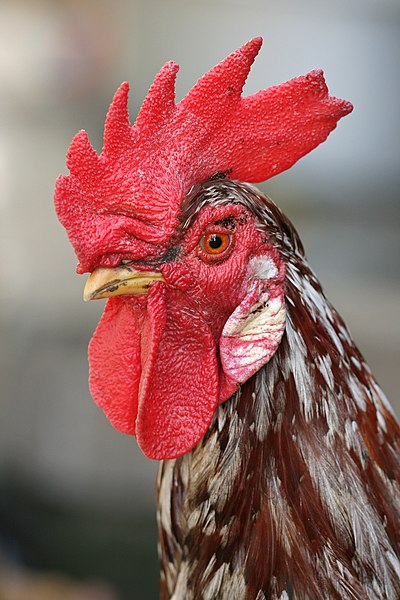

| Visitors Now: | |
| Total Visits: | |
| Total Stories: |

| Story Views | |
| Now: | |
| Last Hour: | |
| Last 24 Hours: | |
| Total: | |
For The Rooster, Size Matters
A lone rooster sees a lot of all the hens in the flock, but the hen with the largest comb gets a bigger dose of sperm – and thus more chicks. This sounds natural, but behind all this is humanity’s hunger for eggs. 
Three eighth generation advanced intercross siblings, demonstrating the extreme variation present in a cross between red jungle fowl and domestic chicken. LiU researchers have in this study discovered two ‘pleiotropic’ genes that influence both comb size and bone mass, and thereby also egg production.

Credit: Dominic Wright





For thousands of years, people have tinkered with the development of domestic chickens. Through selective breeding for a few characteristics such as large muscle mass and increased egg-laying, we have at the same time caused numerous other radical changes in appearance and behaviour. A research group at Linköping University in Sweden has now shown how the size of a hen’s comb is bound up with the ability to lay more eggs. The results have been presented in the scientific journal PLOS Genetics.

Compared with the original wild jungle hen, domestic hens have larger combs as well as denser bones. This influences egg-laying, as the hen’s bone tissues provide calcium for the eggshells. The greater the bone mass, the more eggs she can lay.
After having spotted a clear correlation between comb size and bone mass in chickens from a cross between red junglefowl and domestic chicken, the research group – under the leadership of evolutionary geneticist Dominic Wright – set up a study where such chickens were crossed for several generations. In this way the genome was split up into smaller and smaller regions, which allowed the “mapping” of the functions of individual genes.
In the eighth generation, the researchers found an area that had a strong effect on the weight of the comb – but also on bone mass and fertility.

The genetic variation has gradually decreased over the course of domestication. In domestic chickens there are now some 40 known small regions with stable genes that potentially govern their typical “domestic” characteristics. LiU researchers have now discovered two “pleiotropic” genes: two genes connected to each other that influence several characteristics simultaneously. By regulating the production of cartilage, they influence combs (which consist of cartilage throughout) as well as bone growth (where cartilage is the base material) and, ultimately, egg production.
“The original hens have smaller combs, thinner legs, and lay fewer eggs. When people bred for the characteristic of laying many eggs, the comb grew automatically,” Dominic Wright says.
In nature, the comb is an example of a sexual ornament. Individuals – often males – with the most impressive ornaments are favoured by females, thereby obtaining more numerous offspring than their competitors. In domesticated animals, sexual selection – like natural selection – has lost its role, as it was humans who determine breeding.

Article: A sexual ornament in chickens is affected by pleiotropic alleles at HA01 and BMP2, selected during domestication by M Johnsson, I Gustafson, C-J Rubin, A-S Sahlqvist, K B Jonsson, S Kerje, O Ekwall, O Kämpe, L Andersson, P Jensen and D Wright. PLoS Genetics 8(8) August 30, 2012.
2012-09-05 04:25:42
Source: http://nanopatentsandinnovations.blogspot.com/2012/09/for-rooster-size-matters.html
Source:


